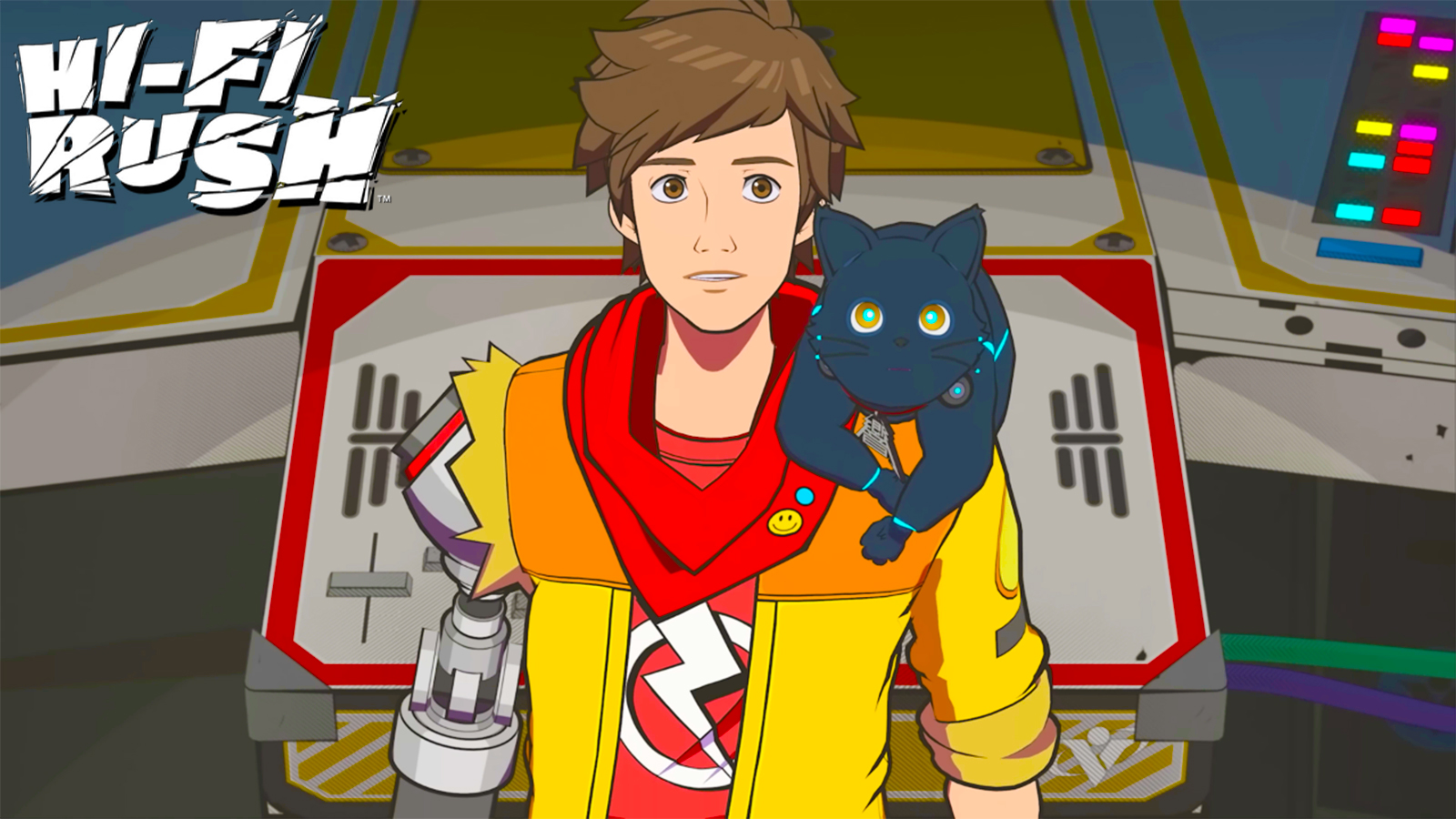

It's a strong teaser for a more cohesive game, and it has me crossing my fingers that one day it will come.Meet Chai. It's stuck, unable to fully commit to its own pitch and unable to capture the moment. Hi-Fi Rush's setlist is too limited to fully embrace its chosen era of music, and it's too dated to resonate with what's hot right now. Sugar, We're Going Down still goes incredibly hard, but Fall Out Boy's newest songs are able to nod at their roots and incorporate enough modern production and structure to sound like something new. Hi-Fi Rush is like going back and listening to the songs you listened to as a teen. As an average action game with a handful of stellar moments that heavily rely on its rhythm-based structure, it's not worth choosing over all the other great options in the genre. A sequel that refines its samey level design and combat and expands its list of songs could be the game I wanted Hi-Fi Rush to be. Another version of this game could have swapped Chai out with Peppermint and filled the tracklist with sharper rock and punk hits that match the anti-capitalist message the game is reaching for but can't quite grasp by the end.Īs a surprise from a developer known for its horror games, Hi-Fi Rush is a promising concept. A dull lead with a group of way more interesting secondary characters and only a handful of solid licensed rock songs struggle to match the energy of the game's first few hours. Hi-Fi Rush's commitment to the marginalia of the games it's aping is impressive for its specificity, but makes me wonder if it could have retained a retro feel without it.

Nostalgia for this era of games (if you even have it) can't make up for the hours you spend dashing past a bunch of stuff you don't need.

I was strong enough for anything Hi-Fi Rush could throw at me after only a few hours, and there were only so many emails I could read about robot labor abuses and incompetent bosses. There are crates to smash, collectibles to find, text logs to read, and power-ups for your health and special attack meter hidden throughout each level, but all of it just slows the game down. The exploration sections are where the mid-2000s vibe begins to feel a little like a curse. Hi-Fi Rush's setlist is too limited to fully embrace its chosen era of music. You almost don't have to look at the screen. The song guides you through the obstacles. Nailing these parts without dying or breaking your rhythm is like making it through a Mario level on pure reflex. Sometimes the game even locks the camera and becomes a sidescroller. You have to time your jumps and quickly summon a teammate to break through shields and doors before the next beat hits. Geysers of lava and other environmental hazards make up the platforming sections. The only place the music remains important are the sections in between each battle arena. And without recognizable music or challenging tempo shifts, everything blends together. Other than a few gimmicky boss mechanics, Hi-Fi Rush rarely pushes back on button spam. I was suddenly playing an OK character action game where every fight I cycled through my summons and performed simple combos until the score screen came up. The game starts to use original songs that all feel like a similar tempo and aren't particularly memorable and the combat loses all its oomph. I'm not sure if it's because I funneled a lot of my upgrades into lowering the cooldown on the summons or by playing on normal difficulty, but Hi-Fi Rush eventually stopped being much of a rhythm game halfway through. Some attacks can only be dodged, but spamming parry when the song lined up just right almost always kept me safe. Because the enemies only attack on the beat and are telegraphed with lines and circles on the ground, you can easily dodge or parry them back for damage. By the end I could grapple toward a robot, launch them into the air, and then call in Peppermint to fire a massive laser beam into them, and if that didn't cut it I had Macaron on standby to smash them into scrap metal. Macaron smashes armor apart, and the final character you get is able to douse pockets of fire in the arena.Īs you progress and defeat bosses that test your parry timing and sometimes become just literal rhythm games, you can buy additional moves and passive bonuses. Peppermint blasts enemies with her gun and is necessary for knocking enemy shields out. At any moment (or as a finisher) you can pull in a teammate to help you. Chai has heavy and light attacks that you can combo together and end with a finisher in time with the song. All of these characters (except CNMN) are available as summons during the beat-based combat.


 0 kommentar(er)
0 kommentar(er)
